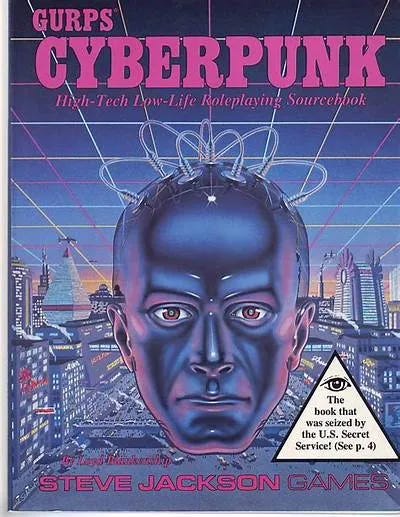In This Issue:
Karkion #1 (Dragonbane) - An Interview
Guest Post - My Roleplaying History: Part 1
Pocket Quest 2024 Progress: Week 5
Welcome to Issue #12. I'm K.J*. We'll start with my interview with the contributors of the Dragonbane supplement Karkion. Definitely worth your money.
Another good read: My good friend Warren Davidson - or Wazza as many RPG players know him - is my guest today. He gives us part 1 of his commentary on the history of RPGs from his perspective. Definitely worth your time.
Lastly, I give a brief update on Pocket Quest.
*I'm K.J. - hobbyist writer, creator, long-time GM, and player who loves supporting and encouraging others in the RPG community. I also playtest and proofread scenarios. I enjoy playing bass guitar and eating dark chocolate but not at the same time.
I started Watch Well Games at the end of 2023 to share stories and create community. I have a lot planned and hope you'll join me.
Karkion #1 (Dragonbane) - An Interview
Editor:
Tomas Brattström
Article Authors:
Nicklas Brandin, Tomas Brattström & Henrik Eriksson
Illustrations and Layout:
Tomas Brattström
Assistance, Inspiration, and Proofreading:
The Authors, Lukas Brattström, Robert Lindh & Thomas Ulfström
Respones by Nicklas Brandin and Tomas Brattström.
Tell me how Karkion came to be. Whose idea was it to create the zine?
In a way it was a shared idea, but I believe Tomas Brattström was the one who actually popped the question. We've been playing together for a few years online due to geographical distance and decided to get together for the first time at one of Sweden's biggest roleplaying conventions, Gothcon in Gothenburg. We had a secondary objective as well, which was starting our campaign in Dragonbane. As we were out walking we got to talking about roleplaying material, premade adventures, alternative rules, tables and whatnot, and Tomas asked if we should try writing something together. He already had some experience with this, but the rest of us have only written material for our own needs. Long story short, we were positive, but at this point we still hadn't thought about starting a fanzine. That came later when we figured out that we wanted to work on different things.
For fun: Describe Karkion in 10 words or less.
The most fun I've had with five other men.
How you decide what gets published?
We all work semi-independently on the parts we want. It's all put into a shared document so anyone can contribute to everything. Once we've gathered enough material we start picking out the bits that are the most fleshed out and focus our efforts on them. The rest is put on the backburner for the next issue.
As a guideline we want to have an adventure in each issue where we use or introduce the different things we've created. So anything that is mentioned in the adventure naturally gets a higher priority.
Apart from that we go by what feels done. We're not that worried about meeting a certain deadline or to have a fixed amount of pages.
No doubt putting together a zine takes a lot of time and energy. What's the most rewarding part(s) of doing all this?
For me it's the feedback. Seeing that people have taken the time to read our zine, and found it good enough to say a few words about is great. So far people have been very nice and positive.
What has been the hardest or most challenging skill(s) to learn, whether as an individual or a group of creatives, in order to put the zine together?
The key skill in any cooperative endeavour is always communication. That means talking and listening. For me as a writer the hardest part is not getting defensive about my work. If someone doesn't like my stuff, I need to listen because they might have a point I haven't thought about. On the other hand, maybe my vision wasn't clear enough to start with. Only by talking to each other can we agree on what works best. I think we're helped greatly by our experiences playing together. There is a trust, that whoever stomps on my latest idea doesn't do it out of malice, but out of concern that it's not as good as it could've been. Some of the ideas my friends have put forward have been absolutely brilliant.
Lastly, can give us any teasers or hints about the next issue of Karkion?
A new school of magic, monsters and an adventure that ties it all together just as in the first issue. On top of that we're leaning into populating the Vale, so we're adding a few NPCs and a place to hang out. Of course the tables we promised in issue 1 are coming as well.
Reasons Why You Should Buy This Supplement:
New, quality material to enhance your Dragonbane game sessions: professions, Heroic Abilities, school of magic, monster and creature both
An adventure that brings all this content together
Fun to read
Beautiful artwork
Clean layout that's easy to navigate
Available in Englsh and Swedish
TEASER ANNOUNCEMENT: Our cartographer partner Schlau (Light in Darkness Gaming), is working on something special. More details in future newsletters. So, watch this space!
My Roleplaying History: A commentary on the Hobby, Part 1 - The 1980s and 1990s
by guest writer Warren Davidson
I’m a long-time gamer with a passion for RPGs. I’ve written several game reviews and attended conventions where I’ve run homebrew adventures. I hope my experiences make for an interesting and fun read. And I hope one day to create and publish my own RPG.
It was the spring of 1982, and a new craze was sweeping through my school, a book, but unlike an ordinary book you didn’t read this one from cover to cover. Rather it let you go on an adventure of your own choosing, and it was unlike anything I’d ever experienced before. You could enter a fantasy world filled with goblins, dragons and play as the principal protagonist, a mighty hero seeking a king’s ransom in gold somewhere inside the mountain lair of an evil warlock. The book was called “The Warlock of Firetop Mountain” and it not only acted as my entry point into role-playing games, but it also changed my life. I vividly remember the excitement of reading a passage where my hero came across a sleeping goblin sentry and I had to decide whether to attack or sneak past. No book had ever given me such a thrill and the opportunity to live in the moment of my character. It was a revelation.
Later that year my best friend asked me if I’d ever tried a game called “Dungeons and Dragons” and of course I said “no”, but my curiosity was piqued. How was it different from Monopoly or Chess? He explained that in this game you created and played your own character and went on wild adventures. He invited me round his house where I experienced my very first game. I played a Ranger in an adventure called “Steading of the Hill Giant Chief.” Our party of adventurers had to sneak into the giant’s huge fortress and kill them. It sounded simple enough but back then I had absolutely no idea what I was doing, and the rules appeared at once magical and indecipherable. But I was hooked, and it would lead me on a journey of discovery which I’m still on today.
This is the first of a three-part commentary on my own experiences with role-playing games. I’ll cover the games I played and how the hobby has evolved through the years. And of course, an account of my own game mastering experiences and how that’s changed too.
I guess I was unusual in that I played Advanced Dungeons and Dragons before the basic rules set. Indeed, it was a while before I purchased the basic set. I saw the monster manual in a book shop and flicked through the pages, loving the black and white illustrations of the creatures within beholder’s, devils, demons, and dragons. I had no idea what the numbers meant but it was the start of my obsession and monster books have remained a firm favourite ever since. I saw a copy of White Dwarf magazine number 52 in my local newsagent a few weeks later and someone was selling the AD&D player’s handbook in the classifieds section. I sent off my pocket money and when it arrived, I sat down and devoured every page. The races, the classes, and the spells oh my! My best friend invited me to join his gaming group and off we went. I still play with two of them forty years later.
So, enough with my backstory and onto the hobby itself. What was it like back then? In a word confusing! I don’t know if you’ve ever tried reading the AD&D player’s handbook but it’s not easy. And don’t get me started on the Dungeon Master’s Guide, however on each read through I would discover something new whether it was a spell, monster or magical item, or some obscure rule hidden away. By today’s standards the rules were a jumble but they were fun. This game demands that you play it with your friends. And that’s what I did – every week and bit by bit I learned more until I was ready to dip my tentative toe into GM’ing (or DM’ing as it was known back then). I picked up an adventure called “Dwellers of the Forbidden City” and ran it. To my surprise I was a natural and loved the entire experience, sure I made mistakes, but I was compelled to carry on. I played through pretty much all the AD&D scenarios throughout the 1980’s and early 90’s. And then to my surprise I discovered that there were other role-playing games out there and some weren’t even fantasy, mind blown!
The game was called Traveller, and it was my first experience with science-fiction role playing. The rules were completely different from AD&D but it had a rich and captivating background which appealed to me. Flying through space and landing on alien planets was at once exciting and dangerous. And you had laser guns! Thanks to White Dwarf magazine (as there was no internet back then), my gaming group learnt of other RPG’s Next up was Golden Heroes, a game of superheroes with randomly generated powers. Then Paranoia which was set inside “Alpha Complex” in a darkly humorous dystopian future ruled by the all-powerful computer. It encouraged in-party fighting and back-stabbing. And yes, paranoia. Warhammer Fantasy Roleplay by Games Workshop labelled itself as “grim and perilous adventuring” and it was my first introduction to the wonderful world of critical hits.
I loved reading through those critical tables and dreaded my character being on their receiving end! Middle Earth Role Playing (MERP) gave me a chance to play in Tolkien’s world and again had a plethora of critical tables and this time fumbles. You had the opportunity to kill yourself while your enemies looked on. At this time several licensed games were released which proved popular such as Judge Dredd by Games Workshop where you were a Judge cleaning up the streets of Mega City One or a Ghostbuster driving around New York carrying an unlicensed nuclear accelerator on your back. Ghostbusters was the first game to create a unified system by using pools of d6’s. Something we take for granted today but it was a revelation in game mechanics at the time. It was slick, made sense and opened up other worlds using the same system. This was further refined by GURPS (Generic Universal Roleplaying System) which had one system with dozens of supplements. Some of them are quite bizarre. There was even an infamous incident where the US Secret Service mistook their cyberpunk book for a hacker's handbook!
TSR released Star Frontiers to recapture the success of D&D, but it wasn’t commercially successful with most thinking it D&D in space. In 1981 Chaosium changed the gaming landscape with Call of Cthulhu. It had a unified system known as D100 or basic role playing and introduced the concept of ordinary people battling cosmic horrors and losing their sanity at the same time. Several campaign books were released which cemented its position as the premier horror game, especially The Masks of Nyarlathotep which is considered one of the best adventures ever written. By the end of the 80’s roleplaying was a cultural phenomenon and D&D a household name. The RPG industry evolved in the 1990’s with games moving away from complex mechanics by taking a more narrative approach. Where the backstory and development of your character mattered more than gaining experience points and traipsing through dungeons killing monsters. The game which led the charge was Vampire the Masquerade and it had a huge impact when it was released by White Wolf Publishing in 1991. They quickly followed this up with their take on Werewolves, Mages, Wraiths, and Changelings. Monsters were no longer faceless foes to be vanquished, rather they were darker aspects of humanity to be explored.
It was during this period that there was an explosion in indie games released by smaller companies. The ones I enjoyed playing included: KULT, SLA Industries, and All Flesh Must be Eaten. Each of them was imaginative and creative. Cyberpunk 2013 and later 2020 by R. Talsorian Games were gritty dystopian takes on where man might go with access to advanced cybernetics. And Earthdawn by FASA was an unusual take on the fantasy genre where characters survived an apocalyptic invasion of horrors and were now just emerging from their underground Kaers to explore their brave new world. During these years all my gamemastering experiences were at my friend’s houses playing round a table with paper, pencils, and dice. There was no concept of online gaming as the Internet, as we know today, didn’t come into being until 1993 and it certainly wasn’t sophisticated enough to run games as we know them today. However, in my opinion, there was nothing more rewarding than sitting with your friends and experiencing worlds of adventure together. Next time I’ll cover the 2000’s and 2010’s.
The GM's Day Sale is still going on DriveThruRPG! I'll highlight just two of our products here. Check out all of our other gaming materials here and here.
This is a new, massive map pack from Schlau (Light in Darkness Gaming). Check it out along with all other LiD maps on DriveThruRPG.
“EXIT STRATEGY: Solo Edition” is a space-themed solo adventure. All you need to play is a D6, a standard deck of cards, and writing utensil.
Pocket Quest 2024: Week 5
DriveThruRPG's third annual game jam known as Pocket Quest is well over halfway over. All this great new content from all the participants will drop April 1st. My update is short. I'm deep in layout land (Affinity Publisher). I'm having fun and learning a lot. I still hope to publish one of my two game ideas. Time is running short.



















